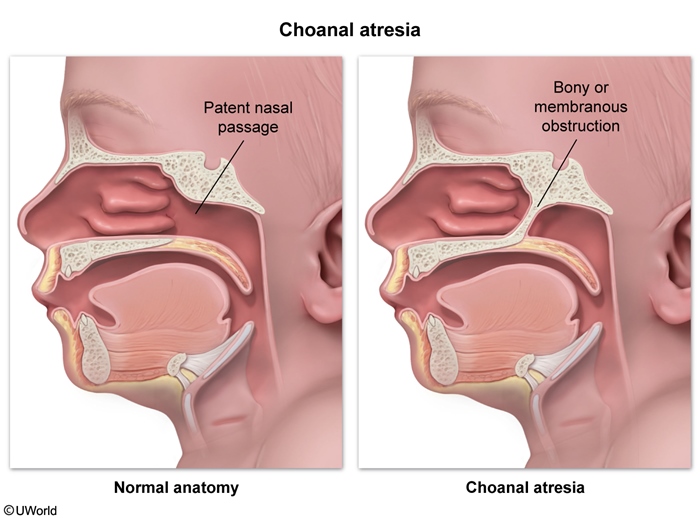Choanal Atresia
Article Sections
Introduction
Choanal atresia is a congenital obstruction of the posterior nasopharynx. It can be unilateral (most common) or bilateral and is the most common congenital nasal anomaly.
Pathophysiology and risk factors
In choanal atresia, the posterior nasal passage fails to open to the pharynx between the 6th and 12th week of gestation (Figure 1), thereby preventing communication between the nasal cavity and the nasopharynx. Choanal atresias are classified as bony (most common), membranous, or mixed, depending on the type of tissue obstructing the choanae.
Risk factors for choanal atresia include:
- Genetic factors (eg, CHARGE syndrome (Table 1))
- Environmental factors (eg, maternal use of antithyroid medications during pregnancy)
- Family history
Clinical presentation
The clinical presentation varies depending on whether the atresia is unilateral or bilateral.
- Bilateral choanal atresia
Continue Learning with UWorld
Get the full Choanal Atresia article plus rich visuals, real-world cases, and in-depth insights from medical experts, all available through the UWorld Medical Library.
Figures
